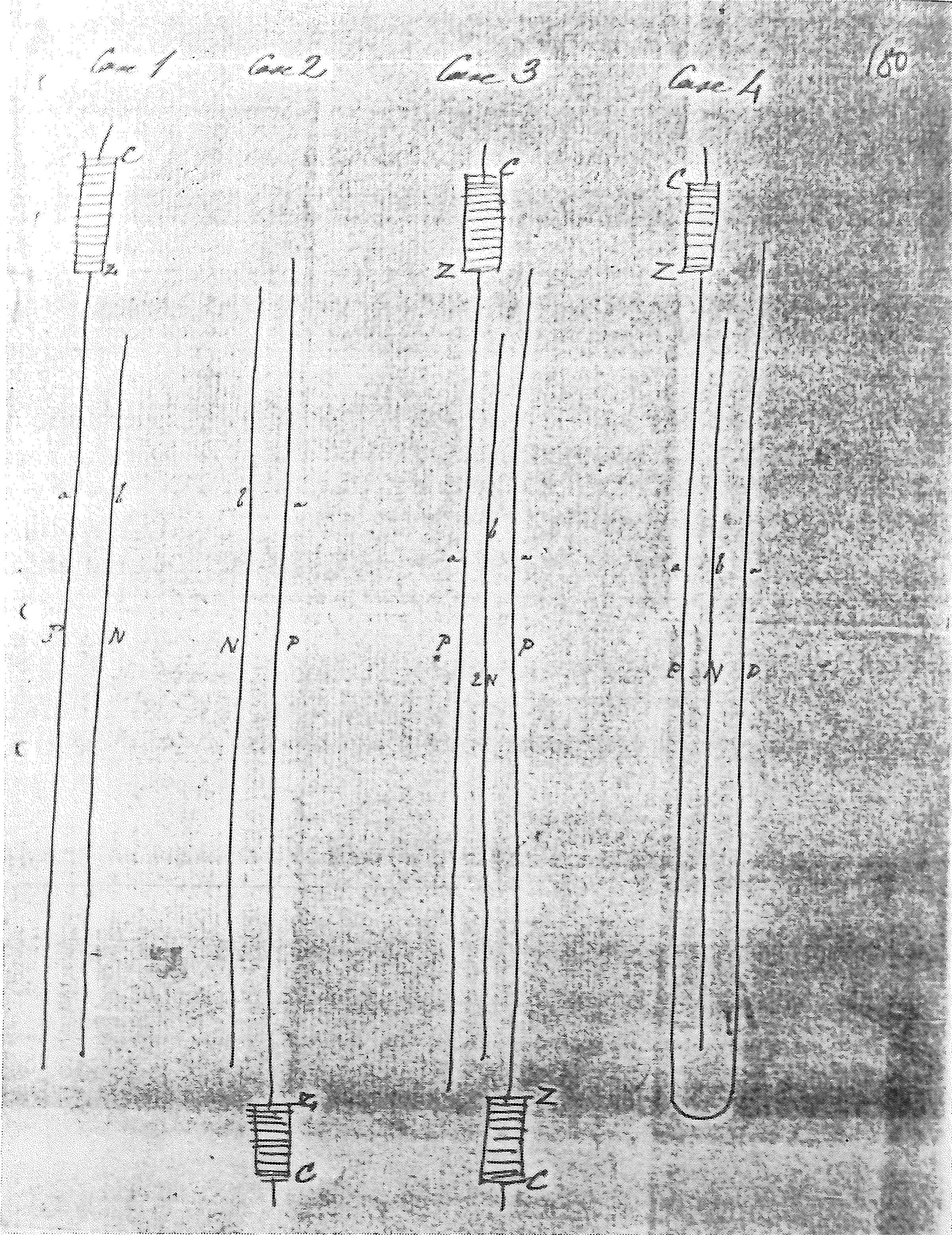Faraday to George Biddell Airy 19 October 1853
R Institution | 19 Octr. 1853
My dear Sir
From what you said about the notes last Saturday night1 I send you mine to look at if you like. Because of my very bad memory I am obliged to make them long. I must ask you to return them but make any abstract or copy that you like. I have even sent the notes I made the week before2 at the Wharf3 on the same subject.
In regard to your note4 I send back the diagram with the wires marked a and b. Then for simplicitys sake let us suppose that the action[s] are perfect & permanent i.e that the whole of a shall in each case be equally electrified - the insulation being perfect. Then no induction would take place in any of the cases if the wires b were also perfectly insulated. It is only when being uninsulated they can assume the contrary state that the induction occurs. (I neglect that which theoretically would occur across the thickness of the wire for it is as nothing)[.]
But if b was in each case uninsulated or touching the ground then induction would occur but the amount of induction would be twice as much on it in the cases 3 & 4 as those in 1. & 2. the battery being of the same power.
I hope I have caught your meaning & that any case which may occur to your mind will be included in the explanation I have endeavoured to give[.]
Ever Truly Yours | M. Faraday
The | Astronomer Royal | &c &c

Please cite as “Faraday2743,” in Ɛpsilon: The Michael Faraday Collection accessed on 27 April 2024, https://epsilon.ac.uk/view/faraday/letters/Faraday2743